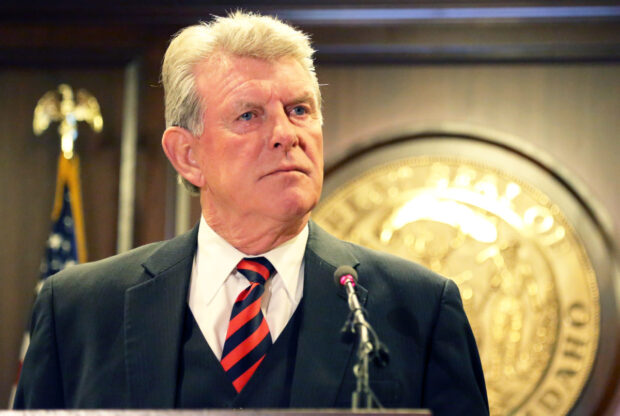The House Education Committee is turning its attention to the nuanced rulemaking process — which will likely include consideration of updated science standards.
A proposed slate of new science standards sparked controversy in 2016. Lawmakers rejected the standards with very little public explanation – although at least one lawmaker expressed concern over language involving human impact on the environment.
That move meant the state kept its old science standards in place while the State Department of Education gathered more public input and assembled a committee to revise the standards.

Fast-forward to Dec. 15, when the State Board of Education approved a temporary rule that included newly revised science standards. Gov. Butch Otter approved that temporary rule just before the start of the legislative session, and the science standards went into effect on a temporary basis, said Blake Youde and Tracie Bent of the State Board.
Marilyn Whitney, Otter’s deputy chief of staff and education liaison, confirmed to Idaho EdNews that Otter approved the temporary rule.
Otter’s action means the standards can still be revised, rejected or allowed to expire. It also means the Legislature will have a say.
The standards are set to expire at the end of the legislative session unless lawmakers extend the temporary rule. If lawmakers do not extend the temporary rule, the state will revert back to its old standards, Bent said.
Meanwhile, the timetable could allow districts, educators and curriculum directors to ramp up before new standards are fully implemented into classrooms.
If lawmakers extend the temporary rule, the standards would also be extended. The SDE or the State Board would work to develop permanent standards, which would then likely go back to the 2018 Legislature.
“Even though it is in effect, it still takes time to do the training or professional development and other things when we change standards,” Bent said. “Some times it takes a year or longer for school districts to get up to speed on standards.”
Bent cited the gradual rampup and implementation of Idaho Core Standards as a recent example.
The new standards are 75 pages long and are available on the State Board website (scroll down to Tab Two, page 53 to begin reading the standards).
The old science standards were adopted in 2001. The SDE’s Executive Committee on Science Standards Revision, the group that developed the latest proposal for standards, calls the existing standards “very broad and vague in nature.”
“In the last 15 years, there have been significant advancements in science and technology; therefore updated science standards are necessary,” the SDE’s science committee wrote.
The new standards focus on an inquiry-based learning methods and a three-dimensional approach that incorporates science content with crosscutting concepts and science and engineering practices.
“When comparing our current science standards with the revised science standards, it becomes clear that the document does not contain new content but is instead driven by a new approach to teaching that content,” the SDE science committee wrote.
The committee behind the newest standards was similar in makeup to the group that developed the standards lawmakers rejected a year ago. However, there were some changes.
Idaho Teacher of the Year for 2016 Melyssa Ferro, Boise district K-12 science and social studies coordinator Chris Taylor and Idaho STEM Action Center Executive Director Angela Hemingway served on both committees.
Jason George, a Vision Charter School teacher who received the Presidential Award for Excellence from President Obama this year, served on the first committee but not the most recent committee.
House Education Committee Chairwoman Julie VanOrden, R-Pingree, said her committee will work on the rulemaking process over the next two weeks.
